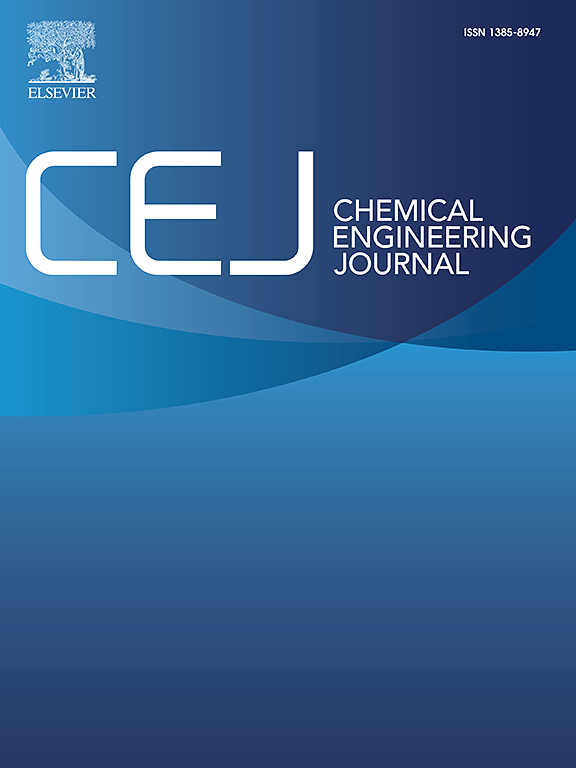Enhanced CO2-to-CH4 conversion via grain boundary oxidation effect in CuAg systems
IF 13.3
1区 工程技术
Q1 ENGINEERING, CHEMICAL
引用次数: 0
Abstract
The authentic active sites of oxide-derived copper (OD-Cu), namely grain boundaries (GBs) and oxidized Cuδ+ species, is still debatable, and their role in governing CH4 conversion remains unclear. Herein, this study answers these questions using bimetallic catalysts by novel electro-shock strategy with controllable GBs for the oxidization of Cuδ+ species by modulating Ag loading. The Ag enrichment at the GBs facilitates the bonding of oxygen with the uncoordinated Cu atoms, resulting in GB oxidation effect. The obtained CH4 selectivity is twice that of GBs or nanoalloy effect. The enhanced performance is attributed to the stable Cuδ+ species and unique electron transfer mechanism from GB oxidation structure. Operando attenuated-total-reflection Fourier-transform-infrared-spectroscopy unveils the reaction pathway of CO2-to-CH4 and the sluggish reversible quenching processes of intermediates. Theoretical calculations indicate that the weak *CO adsorption on GB oxidation structure facilitates *CO hydrogenation, promoting CO2-to-CH4 conversion.

通过铜银体系中的晶界氧化效应提高 CO2 到 CH4 的转化率
氧化物衍生铜(OD-Cu)的真正活性位点(即晶界(GBs)和氧化 Cuδ+ 物种)仍有争议,它们在控制 CH4 转化中的作用也仍不清楚。在此,本研究通过新型电休克策略使用双金属催化剂回答了这些问题,该催化剂具有可控的 GBs,可通过调节 Ag 负载氧化 Cuδ+ 物种。银在 GB 上的富集促进了氧与非配位 Cu 原子的结合,从而产生 GB 氧化效应。所获得的 CH4 选择性是 GBs 或纳米合金效应的两倍。性能的提高归功于稳定的 Cuδ+ 物种和独特的 GB 氧化结构电子传递机制。操作衰减-全反射傅立叶变换红外光谱揭示了 CO2 到 CH4 的反应途径以及中间产物的缓慢可逆淬灭过程。理论计算表明,GB 氧化结构上的弱 *CO 吸附促进了 *CO 加氢,从而推动了 CO2 到 CH4 的转化。
本文章由计算机程序翻译,如有差异,请以英文原文为准。
求助全文
约1分钟内获得全文
求助全文
来源期刊

Chemical Engineering Journal
工程技术-工程:化工
CiteScore
21.70
自引率
9.30%
发文量
6781
审稿时长
2.4 months
期刊介绍:
The Chemical Engineering Journal is an international research journal that invites contributions of original and novel fundamental research. It aims to provide an international platform for presenting original fundamental research, interpretative reviews, and discussions on new developments in chemical engineering. The journal welcomes papers that describe novel theory and its practical application, as well as those that demonstrate the transfer of techniques from other disciplines. It also welcomes reports on carefully conducted experimental work that is soundly interpreted. The main focus of the journal is on original and rigorous research results that have broad significance. The Catalysis section within the Chemical Engineering Journal focuses specifically on Experimental and Theoretical studies in the fields of heterogeneous catalysis, molecular catalysis, and biocatalysis. These studies have industrial impact on various sectors such as chemicals, energy, materials, foods, healthcare, and environmental protection.
 求助内容:
求助内容: 应助结果提醒方式:
应助结果提醒方式:


